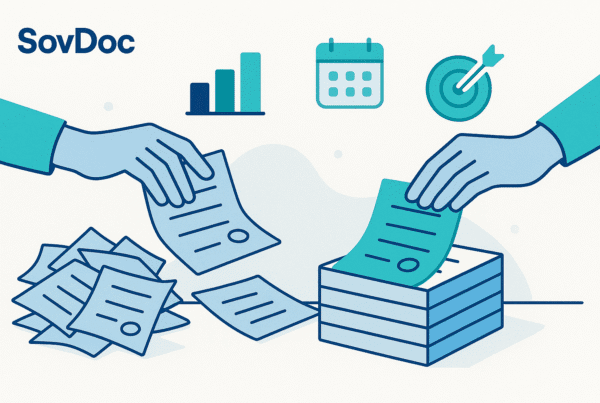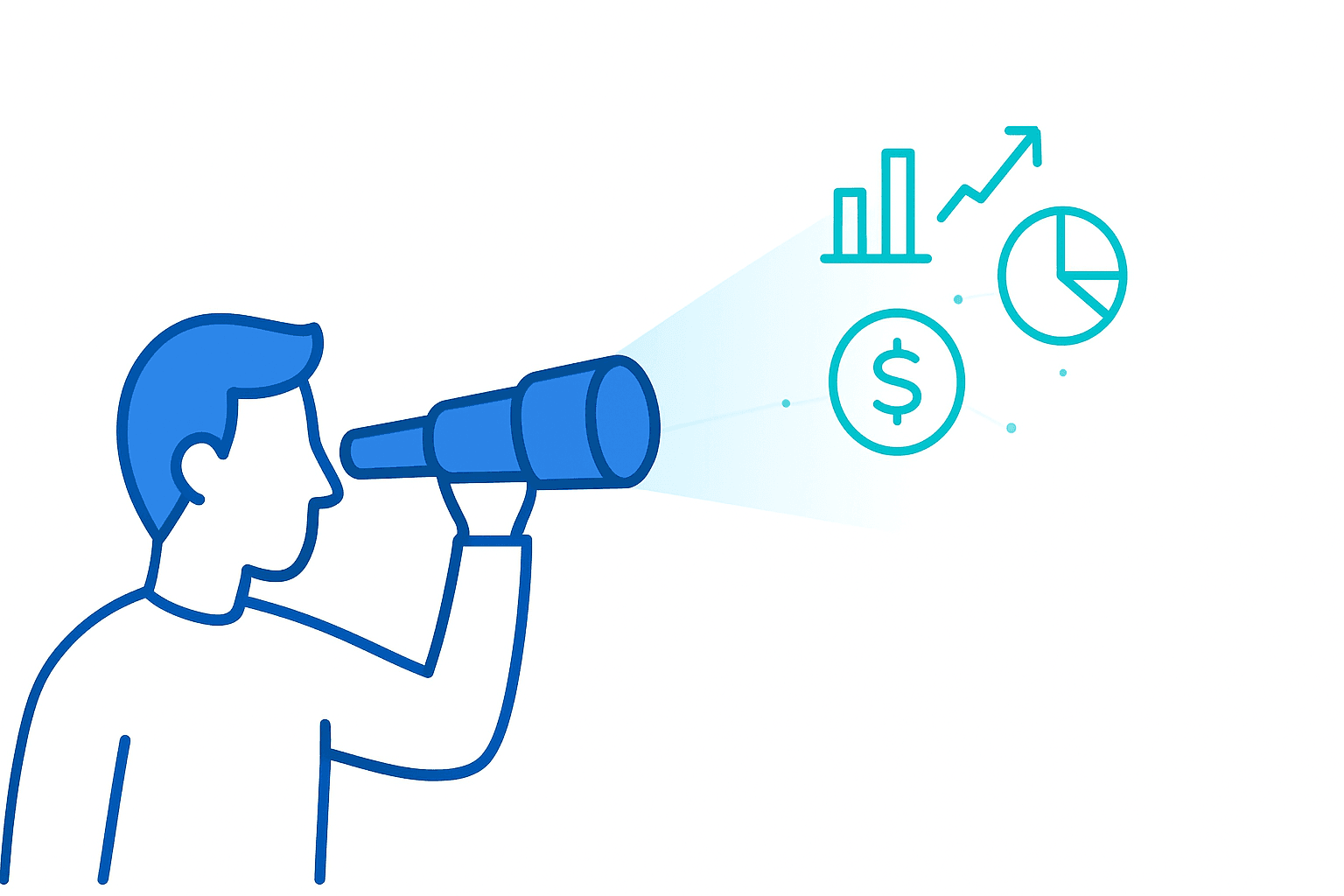If you’re considering adding remote patient monitoring to your practice—or evaluating whether your current RPM program is generating the revenue it should—you’re asking the right questions. The remote patient monitoring market has exploded to $27.72 billion in 2024, and it’s projected to reach $56.94 billion by 2030. But here’s what matters more to you as a practice owner: each Medicare beneficiary can now generate over $1,000 annually through RPM services.
The challenge isn’t whether RPM can be profitable—it’s choosing the right revenue model for your specific practice situation. Whether you’re running a small family practice curious about the financial opportunity, or managing a multi-physician group ready to scale RPM services, this guide will walk you through exactly how different remote patient monitoring revenue models work and which one makes the most financial sense for your practice.
Additional Resources:
- How to Sell Your Medical Practice – Complete guide for practice owners
- Medical Practice Valuation Guides – Understanding your practice worth
- Healthcare Strategic Planning – Long-term practice optimization
What Does RPM Mean Medically and How Is It Different from Telehealth?
Let’s start with the basics, because understanding what RPM actually entails is crucial for evaluating its revenue potential.
RPM (Remote Patient Monitoring) medically refers to the continuous collection and transmission of patient health data from outside traditional healthcare settings—typically from patients’ homes—using digital devices like blood pressure monitors, glucose meters, or wearable sensors. This data flows directly to your clinical team for ongoing monitoring and intervention.
Remote monitoring meaning in practical terms: instead of waiting for patients to come to your office for routine checks, you’re receiving their vital signs, medication adherence data, and symptom reports in real-time or near real-time. Think of it as extending your clinical oversight into your patients’ daily lives.
Here’s the key distinction many practice owners miss: remote patient monitoring differs from telehealth in fundamental ways that affect your revenue model choices. Telehealth is primarily about virtual visits—replacing in-person appointments with video calls. RPM, on the other hand, is about continuous data collection and monitoring between visits.
Consider this example: if you have a heart failure patient, telehealth might involve a monthly video check-in, while RPM means you’re receiving their daily weight, blood pressure, and symptom data, allowing you to intervene before they need emergency care. The revenue implications are significant—telehealth generates income per visit, while RPM creates ongoing monthly recurring revenue streams.
Which Remote Patient Monitoring Revenue Model Should You Choose?
The RPM landscape offers multiple ways to generate revenue, and your choice significantly impacts both your profit margins and operational complexity. Let’s examine each model with the financial specifics you need to make an informed decision.
Medicare Fee-for-Service: The Foundation Revenue Model
If you’re just starting with RPM, the Medicare fee-for-service model provides the most straightforward path to revenue. CMS reimbursement for 2025 includes these specific codes:
- CPT 99453: Initial device setup and patient education – $19.73
- CPT 99454: Monthly device supply and data collection – $43.02
- CPT 99457: First 20 minutes of clinical review and management – $47.87
- CPT 99458: Each additional 20 minutes – $23.87
What this means for your practice: A typical RPM patient generates $110-140 monthly through these codes alone. With 100 active RPM patients, you’re looking at $11,000-14,000 in monthly recurring revenue just from Medicare reimbursements.
Pro Tip: Start with your highest-risk patients first—those with frequent readmissions or ER visits. These patients generate the most immediate ROI and help you refine your workflows before scaling.
Subscription-Based Models: Predictable Revenue with Higher Margins
Subscription models have emerged as the dominant approach, representing 60% of current RPM market share. Typical subscription pricing ranges from $40-80 per patient per month, but the key is understanding what’s included. Most subscription services handle device provisioning, data monitoring, clinical alerts, and patient engagement.
Your revenue equation: If you’re paying $50 PPPM for a comprehensive RPM service and billing Medicare $110-140 PPPM, your net revenue is $60-90 per patient monthly. Scale this to 200 patients, and you’re generating $12,000-18,000 in net monthly revenue with significantly reduced operational burden.
Value-Based Care Contracts: The Highest Profit Potential
Value-based contracts tie your RPM revenue to patient outcomes and cost savings, creating opportunities for substantially higher returns. Heart failure patients generate average annual savings of $8,000, while diabetes patients save $3,400 annually through effective RPM programs. In value-based arrangements, your practice typically receives 20-50% of demonstrated cost savings.
Real-world example: If your RPM program prevents just one heart failure readmission monthly (average cost: $30,000), and you receive 25% of the savings, that’s $7,500 monthly in value-based payments—on top of your standard reimbursements.
Quick Win: Many practices overlook this, but documenting prevented readmissions is crucial for value-based contracts. Track your intervention data from day one—it becomes your negotiating power with health plans.
| Revenue Model | Monthly Revenue Per Patient | Operational Complexity | Best For |
| Medicare Fee-for-Service | $110-140 | High | Small practices starting RPM |
| Subscription-Based | $60-90 net | Low | Medium practices seeking efficiency |
| Value-Based Care | $150-300+ | Medium | Large practices with care coordination |
| Direct-Pay Programs | $75-200 | Low | Concierge/affluent populations |
| Hybrid Models | $120-250 | High | Multi-physician groups |
| Hardware-as-a-Service | $40-100 net | Medium | Practices minimizing capital investment |
How Much Can Your Practice Actually Generate from RPM?
Let’s talk specific numbers, because understanding your true ROI requires honest accounting of both revenue and expenses.
Revenue Per Patient: The Realistic Range
Conservative estimate: $60-120 per patient monthly through basic Medicare billing Optimistic estimate: $150-300 per patient monthly with comprehensive hybrid models Premium programs: $200-500 per patient monthly for direct-pay or enhanced services
True Operational Costs
We often find that practice owners underestimate the operational costs of RPM implementation. It’s quite a vulnerable experience to show your true margins, but understanding these costs upfront prevents unpleasant surprises later.
Technology platform: $10-30 per patient monthly Clinical staffing: 15-30 minutes monthly per patient (varies by acuity) Device management: $5-15 per patient monthly Administrative overhead: 10-20% of gross revenue
Bottom line: Well-run RPM programs achieve gross margins of 60-80% after operational costs. Net margins typically fall in the 30-50% range, making RPM one of the more profitable service additions for most practices.
| Practice Size | Recommended Patient Volume | Monthly Revenue Potential | Payback Period |
| Small (1-3 physicians) | 50-100 patients | $5,500-14,000 | 6-9 months |
| Medium (4-10 physicians) | 150-300 patients | $16,500-42,000 | 4-6 months |
| Large (10+ physicians) | 300+ patients | $42,000+ | 3-5 months |
What Are the Most Common RPM Revenue Model Mistakes?
We’ve seen practices make several predictable errors when implementing RPM revenue models. Here’s how to avoid the most costly ones:
Mistake #1: Choosing complexity too early. Many practices start with hybrid models before mastering basic Medicare billing. We often find that sellers are hesitant to start simple, as it feels less sophisticated, but starting with fee-for-service gives you the foundation to build more complex models later.
Mistake #2: Underestimating administrative burden. Fee-for-service models require significant documentation and workflow changes. Factor this into your staffing plans and financial projections—many practices need 0.5-1.0 FTE dedicated to RPM operations per 100 patients.
Mistake #3: Ignoring patient engagement costs. RPM only works if patients actively participate. Budget for patient education, technical support, and ongoing engagement activities. Think of it like opening a new service line—you need marketing and support infrastructure.
Mistake #4: Overlooking payer mix impact. Different revenue models work better with different insurance types. If you’re primarily commercial insurance, value-based models might offer better returns than Medicare fee-for-service approaches.
Before choosing your revenue model, analyze your payer mix. Practices with 70%+ Medicare patients should start with fee-for-service, while those with strong commercial contracts can jump directly to value-based models.
How Are Remote Patient Monitoring Revenue Models Evolving?
The RPM landscape is changing rapidly, and understanding these trends helps inform your long-term strategy, especially if you’re considering practice optimization or eventual sale.
AI integration is commanding premium pricing, with AI-powered RPM projected to reach $8.44 billion by 2030. If you’re planning major RPM investments, consider platforms with AI capabilities for future revenue optimization. Think of AI like having a digital nurse who never sleeps—it can monitor patient data continuously and alert your clinical team only when intervention is needed.
Value-based care adoption continues accelerating, with outcome-based models expected to grow from 15% to 35% market share by 2028. This shift represents a significant opportunity for practices ready to invest in care coordination capabilities.
Regulatory expansion continues creating new revenue opportunities. 42 state Medicaid programs now cover RPM services, and recent CMS updates have streamlined documentation requirements, making it easier for smaller practices to participate.
The practices implementing RPM now are positioning themselves as acquisition targets. Buyers increasingly value recurring revenue streams and tech-forward operations when evaluating practice purchases.
What Should You Do Next to Optimize Your RPM Revenue?
Whether you’re implementing RPM for the first time or optimizing an existing program, your next steps depend on your current situation:
If you’re new to RPM: Start with Medicare fee-for-service billing for 25-50 chronic disease patients. This provides the clearest path to understanding both revenue potential and operational requirements. Choose patients with conditions like diabetes, hypertension, or heart failure where RPM has proven clinical and financial benefits.
If you have basic RPM: Evaluate subscription services to reduce administrative burden and improve margins. Calculate your current cost per patient and compare with subscription alternatives. Many practices find they can increase their net margins by 20-30% while reducing staff workload.
If you’re scaling RPM: Investigate value-based contracts with health plans and consider AI-enabled platforms for efficiency gains. At scale, these technologies can reduce your per-patient monitoring costs while improving outcomes.
If you’re considering practice sale: Document your RPM revenue streams carefully. Recurring revenue from RPM can significantly impact practice valuations, but buyers need clear evidence of sustainability and profitability. We often find that well-documented RPM programs can add 10-15% to practice valuations due to their recurring revenue nature.
Keep detailed records of your RPM metrics: patient retention rates, clinical outcomes, and profit margins. These metrics directly translate to higher practice valuations when it’s time to sell.
Remember, the best remote patient monitoring revenue model for your practice is the one that fits your current capabilities while positioning you for future growth. The RPM market will continue evolving, but practices that start with solid financial fundamentals and clear revenue models will be best positioned to capitalize on this $57 billion opportunity.
If you’re evaluating RPM as part of broader practice optimization or considering how it affects your practice’s value proposition, we’re always happy to help you think through the strategic implications. The intersection of clinical innovation and financial performance is exactly where smart practice owners create lasting competitive advantages.
Take the Next Step with Expert Guidance
Understanding RPM revenue models is just the beginning. If you’re serious about implementing or optimizing RPM for maximum profitability, consider these next steps:
Strategic Planning Resources:
- Prepare Your Medical Practice for Sale – Long-term value optimization
- Healthcare Financial Modeling – Revenue projection expertise
- Deal Negotiation and Closing Support – Expert transaction guidance
Connect with SovDoc:
- Schedule a Strategic Consultation – Discuss your RPM implementation strategy
- How We Work – Our proven advisory process
- M&A Glossary – Essential terms for practice owners
The practices implementing RPM revenue models today will be the most valuable assets tomorrow. Make sure you’re positioned for success.


